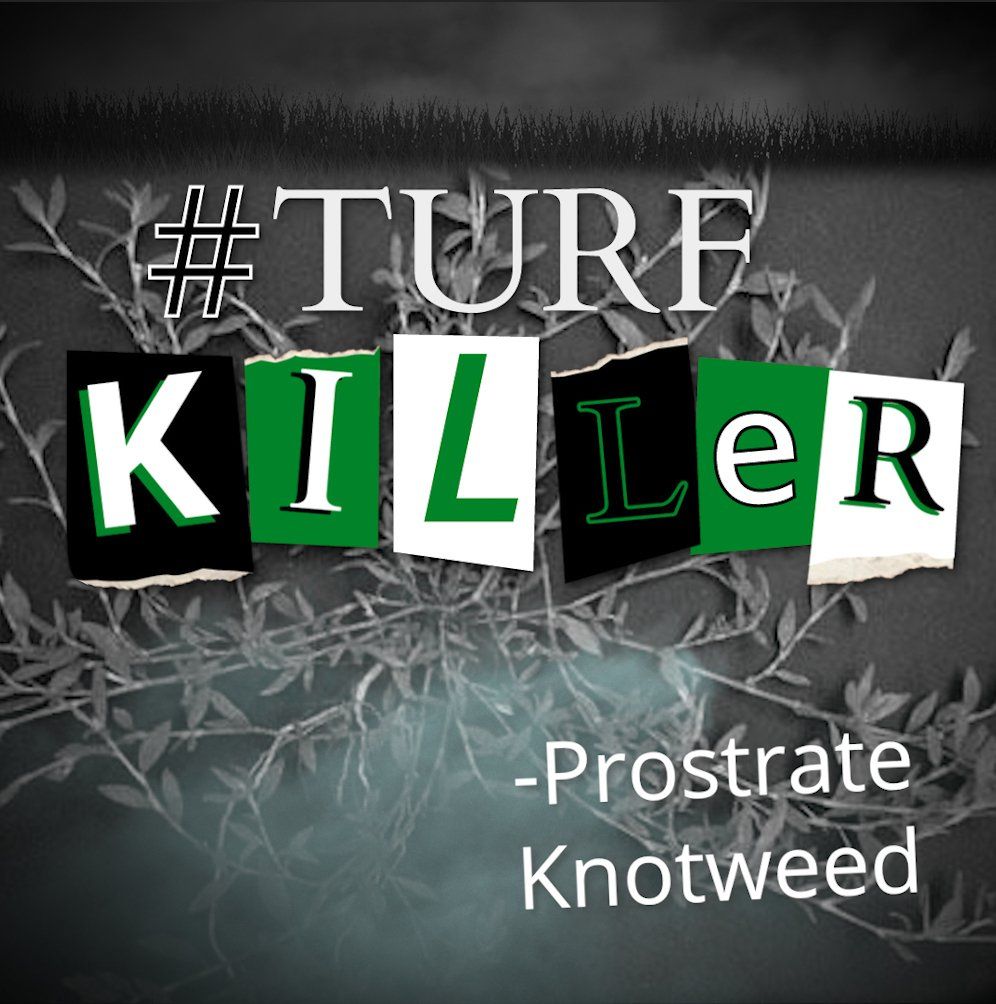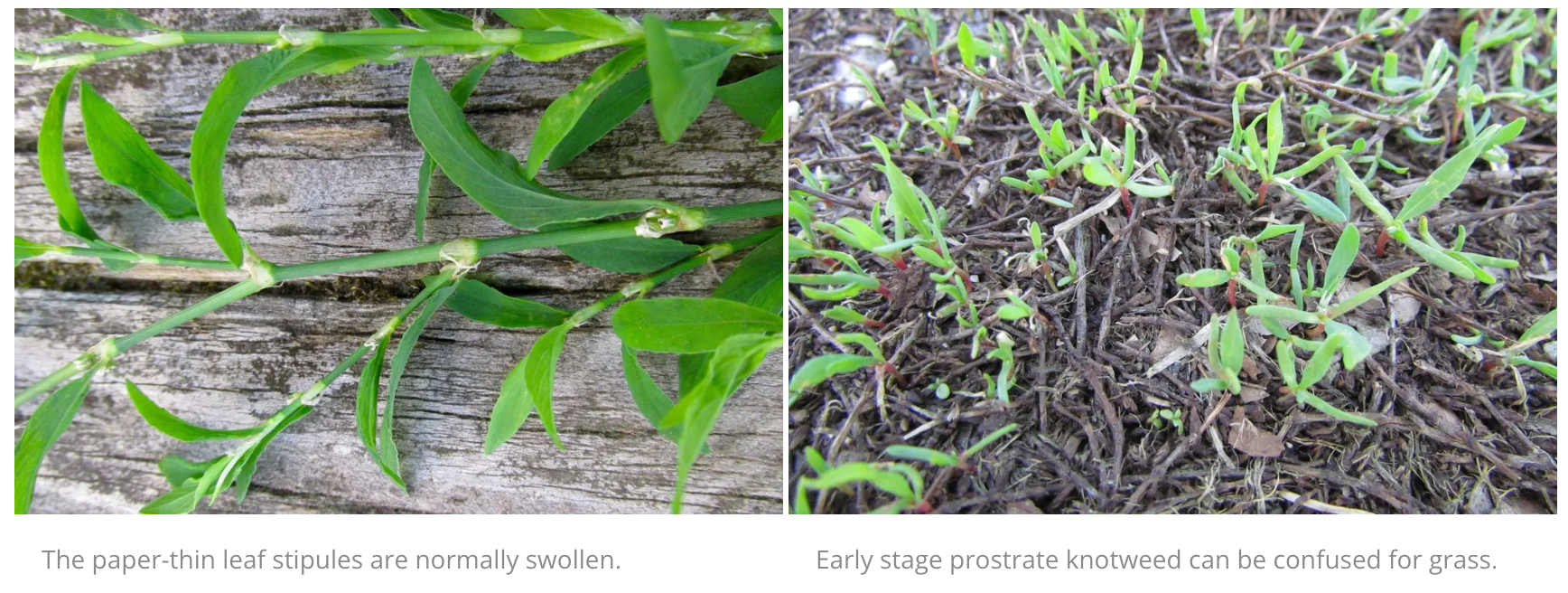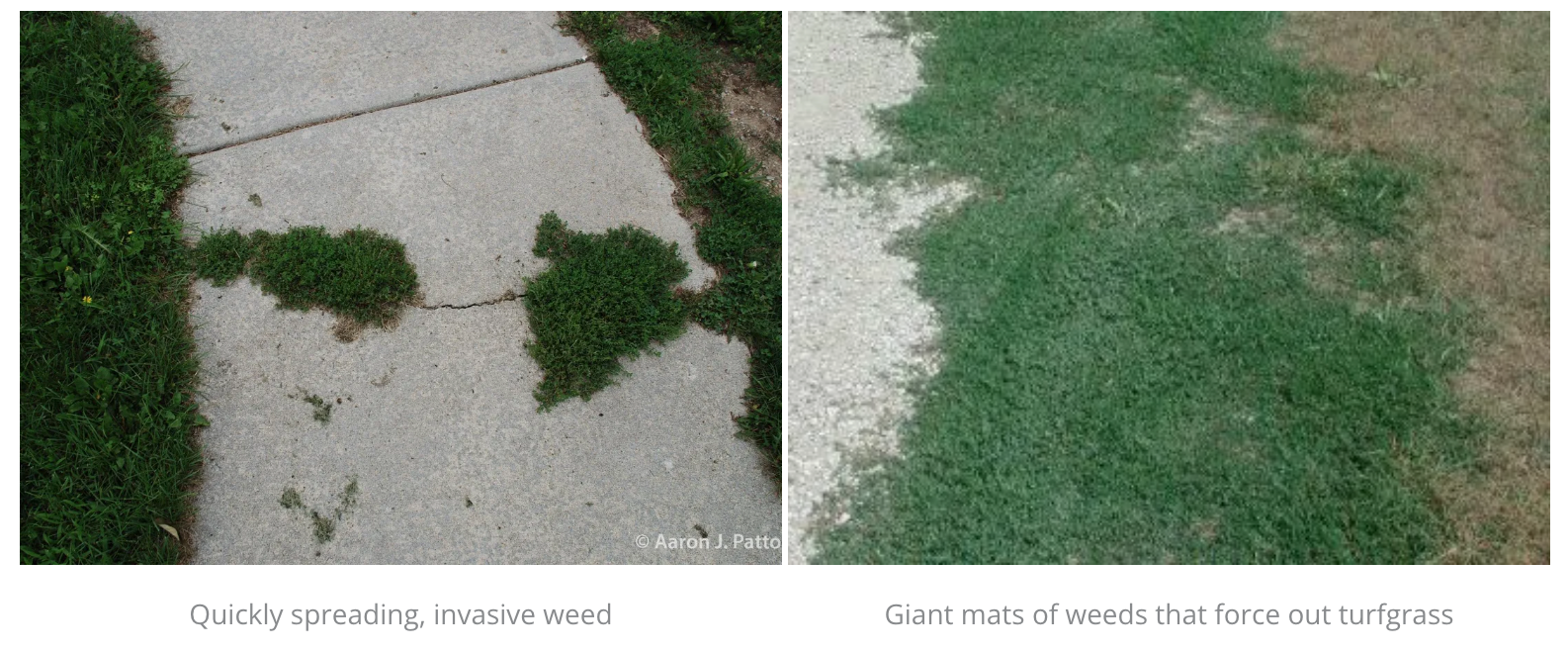Prostrate Knotweed - How to control this invasive turfgrass predator


DESCRIPTION

Prostrate knotweed starts to appear long before any other weeds and will start showing up in the spring as soon as the snow melts. Emerging seedlings are often mistaken for grasses in the very early stage of development. Flowering of the prostrate knotweed may occur from March to November but usually averages from June to October. It germinates from early to mid-April and throughout the spring. A single plant can produce 125 to 6,400 seeds, which can remain dormant for years given the proper conditions. These seeds also serve as forage for songbirds and other small animals.
This weed grows well in compacted soils with poor aeration. These soils can be poor or rich in nutrients and of all types of textures. Prostrate knotweed prefers areas of heavy traffic and can often be found in roadsides, fields, agronomic croplands, vineyards, orchards, residential and commercial turf, gardens, landscaped areas, pathways, walkways, and disturbed unmanaged areas. It readily invades areas where other weeds may struggle to grow.
DAMAGE
Prostrate knotweed can be very damaging to turf due to the giant mats that are formed by the plant. This weed can quickly spread and become very dense, preventing other grasses from even having a chance to grow. The knotweed’s roots and leaves also produce toxins that can alter the composition of the soil, therefore making it unsuitable for certain native species. Prostrate knotweed is killed by the first few frosts of the fall, however, the dead branches will remain even after the winter. These dead branches and clusters are not only ugly but can become a fire hazard.
Although prostrate knotweed itself is not hazardous to humans, the plant can host parasitic weed dodder, viruses, nematodes, and fungi such as powdery mildew fungi. Predatory insects may also use the flowers as a food source.

MANAGEMENT
Controlling prostrate knotweed in late spring to early summer is encouraged. Turf will have a higher chance of recovering the damaged areas. Prostrate knotweed is considered an indicator plant for compacted soil. Aeration is a common management method which can be done by loosening the soil to provide better drainage and an environment for more desirable species. Overseeding with a locally adapted grass seed is highly suggested.
Mechanical control methods alone will not properly control the infestation of prostrate knotweed in turfgrass. However, frequent manual removal using common weeding tools, combined with mulching, can effectively manage this weed in home gardens. Prostrate knotweed and its seeds can also survive mowing. It is suggested to avoid mowing areas infested with this weed to stop the seeds from spreading.
Chemical control is the most effective route to take when managing prostrate knotweed. For best results, a preemergent herbicide should be applied prior to seed germination. There are many herbicides that can control prostrate knotweed. Preemergent active ingredients labeled to control prostrate knotweed include atrazine, dithiopyr, oxadiazon, pendimethalin, prodiamine and trifluralin. Be sure to read label completely for proper application.
For postemergence control, herbicides that contain dicamba, glyphosate, and pelargonic acid have proven to be effective. In early stages of growth, when the weed is less than 3 inches in diameter,
2,4-D can also successfully be applied.
PREVENTION
Keep your turf thick and lush by adopting a seasonal fertilizer program that will ensure your turf can fend off weeds AND disease pressure. Avoid wearing and tearing up turf by avoiding walking the same pathway, which will reduce the likelihood of compaction. Soil aeration and overseeding is also essential to preventing your turf from becoming an environment where prostrate knotweed can grow. With the use of pre- and postemergent herbicides, proper management techniques suggested, prostrate knotweed and additional weeds can be easily prevented resulting in beautiful healthy turf.
For professional fertilizers with herbicides to prevent and control weeds, please visit TurfCare’s online Product Catalog .
For green industry professionals or others interested in ordering Turfcare products, please contact our Customer Service to find a distributor near you.
References:
Photos:
The TURFReport Highlights:
Additional Articles and Insights
















